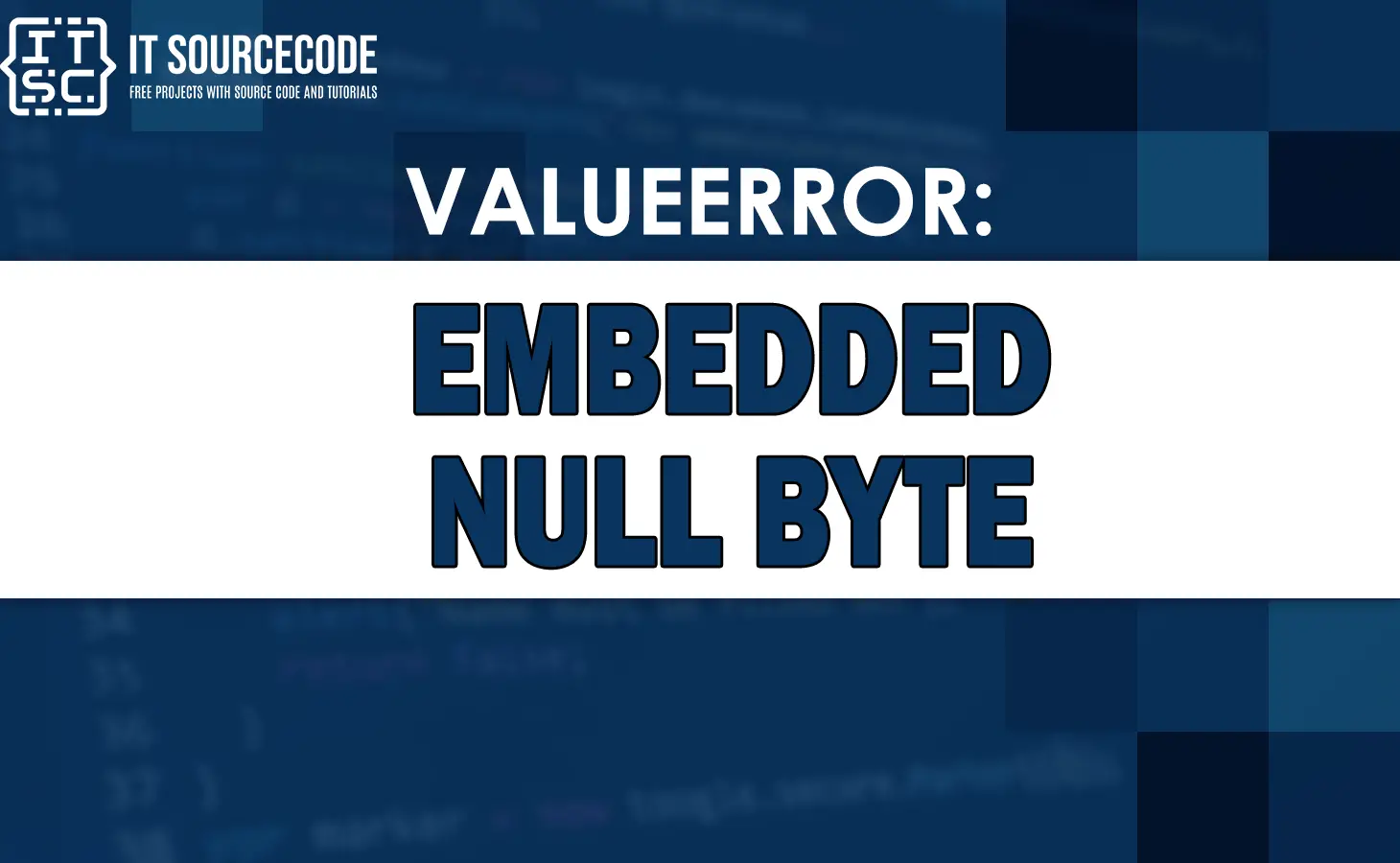Have you ever encountered the ValueError embedded null byte error while working on your programming code? Don’t worry!
In this article, we will explain this error and provide you with valuable examples and solutions to fix it.
What is the ValueError: embedded null ‘byte’ Error?
The ValueError: embedded null byte is an error that occurs when a null byte, represented by ‘\x00’, is encountered within a string or byte sequence.
A null byte marks the end of a string in low-level programming languages, and its presence within a string can lead to unexpected behavior and errors in various programming languages.
What are the Common Causes of the Error?
Understanding the common causes of the ValueError: embedded null byte error can help you identify and resolve it effectively.
Here are some typical reasons that can cause this error:
- Null bytes in user input
- File operations with null bytes
- Encoding and decoding issues
Why the ValueError: embedded null ‘byte’ Error Occur?
The ValueError: embedded null ‘byte’ error typically occurs when a byte string or byte array contains a null character (‘\x00’) as part of its content.
In Python, a null character is used to denote the end of a string or byte sequence.
Here are the examples of why the error occurs.
Example 1: Handling Null Bytes in User Input
To better understand the ValueError, let’s look at the following example in Python:
user_input = input("Enter your name: ")
print("Hello, " + user_input + "!")
Suppose the user enters a name consisting of a null byte, such as “John\x00Doe”.
When concatenating the strings, the null byte can cause an error to occur.
To perform this, you can sanitize the user input by removing any null bytes before using it in your code.
Example 2: Working with File Operations and Null Bytes
Let’s see another example that demonstrates how file operations can trigger the ValueError.
We assume that we have a file named data.txt that consists of the following content:
This is some data.
\x00
More data here.
Attempting to read this file without considering the presence of null bytes can result in the ValueError.
To avoid this, you can implement a solution that detects and handles null bytes correctly during file operations.
How to Fix the ValueError: embedded null byte?
Here are the following solutions on how to fix the valueerror: embedded null byte.
Solution 1: Sanitizing User Input
When working with user input, it’s important to sanitize the data to prevent the ValueError embedded null byte error.
Here are the steps to sanitize user input:
- Retrieve user input.
- Check for null bytes in the input.
- If null bytes are found, remove or replace them accordingly.
- Use the sanitized input in your code.
Solution 2: Encoding and Decoding Operations
Encoding and decoding operations can introduce null bytes into strings or byte sequences, lead to the ValueError.
To fix this valueerror, follow the following guidelines:
- Make sure that proper encoding and decoding methods are used.
- Handle exceptions related to encoding and decoding operations.
- Use proper encoding schemes that do not introduce null bytes.
Solution 3: Using Regular Expressions
Regular expressions can help detect and handle null bytes in strings effectively.
By utilizing regular expressions, you can identify and manipulate null bytes as needed.
Consider the following steps:
- Define a regular expression pattern to match null bytes.
- Apply the pattern to the string or byte sequence.
- Remove or replace the null bytes based on your requirements.
Solution 4: Checking File Formats and Encodings
When working with files, it is important to consider their formats and encodings.
Follow these steps to handle null bytes in files:
- Determine the format and encoding of the file.
- Use appropriate file reading or writing methods that account for null bytes.
- Implement error handling mechanisms for file operations involving null bytes.
Solution 5: Proper Exception Handling
Implementing proper exception handling is necessary to easily handle the ValueError. By catching and handling exceptions effectively, you can prevent your program from failing.
Make sure you:
- Identify the specific exception raised when encountering the ValueError: embedded null byte.
- Implement try-except blocks to catch the exception.
- Provide proper error messages or alternative paths when the error occurs.
Additional Resources
Here are the following articles that can help you to understand more about VALUERRORS:
- Valueerror: cannot index with multidimensional key
- Valueerror malformed node or string
- Valueerror attempted relative import in non package
- Valueerror: invalid format specifier
Conclusion
In this article, we discussed the ValueError: embedded null byte error and provided examples and solutions to help you fix this issue effectively.
By understanding the common causes and implementing the suggested solutions, you can ensure your code operates smoothly without encountering this error.
Frequently Asked Questions (FAQs)
A null byte, represented as ‘\x00’, is a character used to denote the end of a string in low-level programming languages.
The ValueError: embedded null byte occurs when a null byte is encountered within a string or byte sequence, causing unexpected behavior.
This error typically occurs from improper handling of null bytes in user input or during file operations.
Yes, many programming languages offer libraries or modules that can help handle null bytes effectively.
The ValueError: ’embedded’ null byte error can occur in various programming languages, especially those that involve string or byte sequence manipulation.

